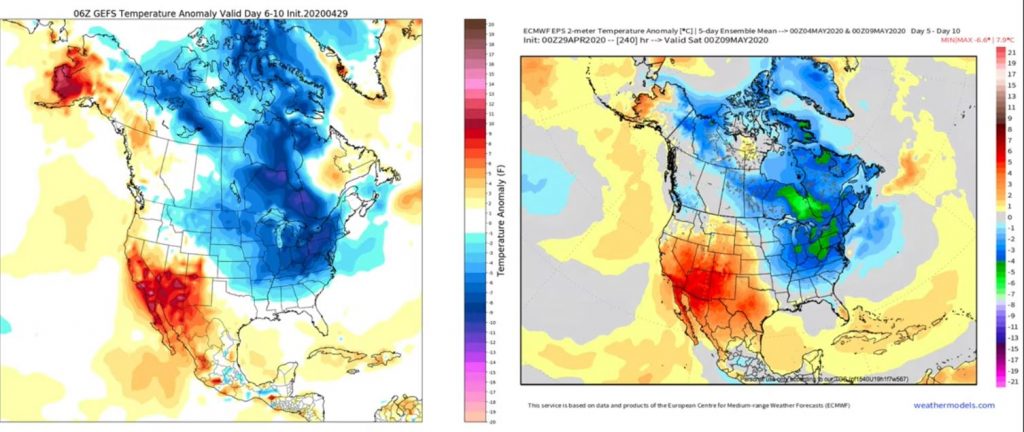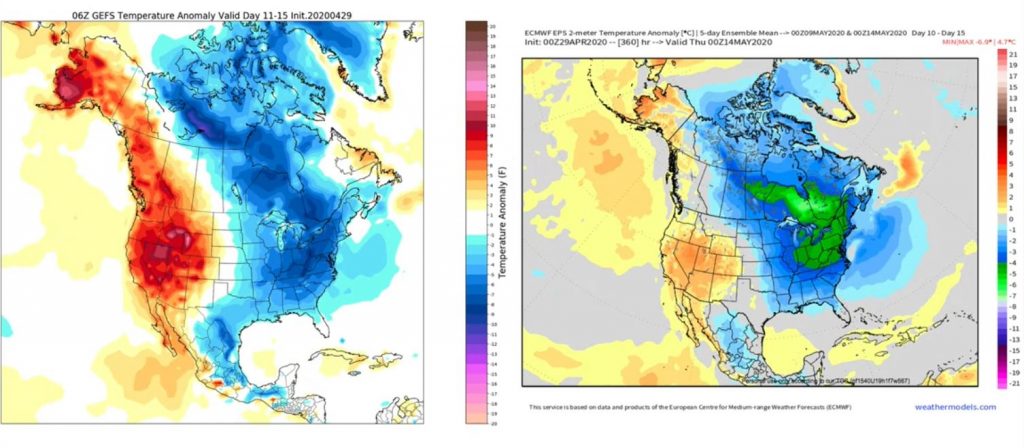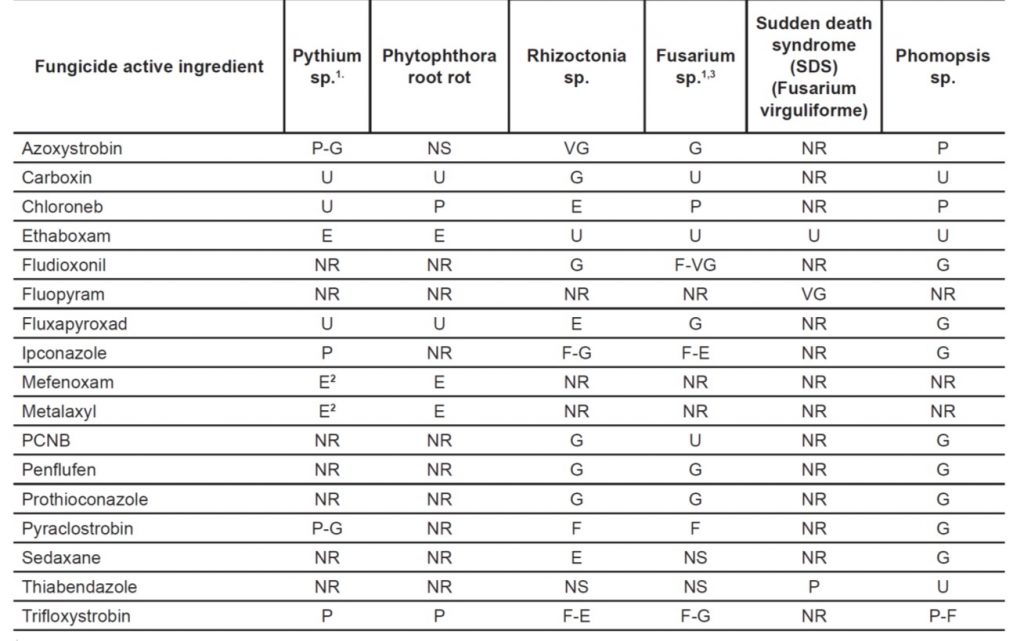It looks as if we have come out of the unusually warm pattern we experienced during late-March thru early-April and fallen back into a cooler one. I’ve watched unusually warm soil temperatures fall rapidly during that period. Although long-term weather forecasts are speculative, it appears that the next week or so will be cooler-than-average. Below are the GFS (U.S.) and European model predictions thru next Thursday. Although today (Thursday) is very warm (& wet), notice that both models are showing below-average temperatures.

These low temperatures are also predicted to persist thru mid-May, as shown below.

Keep in mind that the predictability of these models are quite low past 1 week, so this could change substantially. Still, we are dealing with some relatively cool soils and that need to affect our planting decisions once things dry up.
When soils are cool, we must get the plants up and out of the ground as soon as possible. The longer a sprouted seed is in the ground, the more likely it will be infected with numerous seedling diseases. We must always strive for rapid emergence.
Before we get into too big of a hurry to plant, we must recognize that yields will not decrease drastically for over a month. Although the date when such a decline takes place will vary with the year, my data and experience indicates that this date will not occur to the first week of June. Depending on the number of acres you need to plant, you may not need to get in that big of a hurry. If the same 2-week pattern of cold then warm periods continue, I expect to see a warm-up and warmer soils by the second week of May.
If you must plant into cool soils, I suggest that you use fungicide-treated soybean seed. This will provide some protection if the seed does remain in the soil for an extended period. Below is a table that Dr. Hillary Mehl used this winter listing the effectiveness of several active ingredients with diseases that commonly occur in Virginia. Rhizoctonia and Fusarium have traditionally been our most troublesome. Pythium can also raise it’s head occasionally. Note that only one of these treatments listed are good on sudden death syndrome (SDS), but there is now at least one other product available . I caution that nematodes are often involved with SDS, so additional measures will likely be needed to fully manage that disease.

1 Products may vary in efficacy against different Fusarium and Pythium species.
2 Areas with mefenoxam or metalaxyl insensitive populations may see less efficacy with these products.
3 Listed seed treatments do not have efficacy against Fusarium virguliforme, causal agent of sudden death syndrome
Finally, don’t plant the seed too deep. 3/4 to 1 inch deep is enough. Planting deeper will delay emergence.

Pingback: Will the cold weather harm my soybean this weekend? | Virginia Ag Pest and Crop Advisory